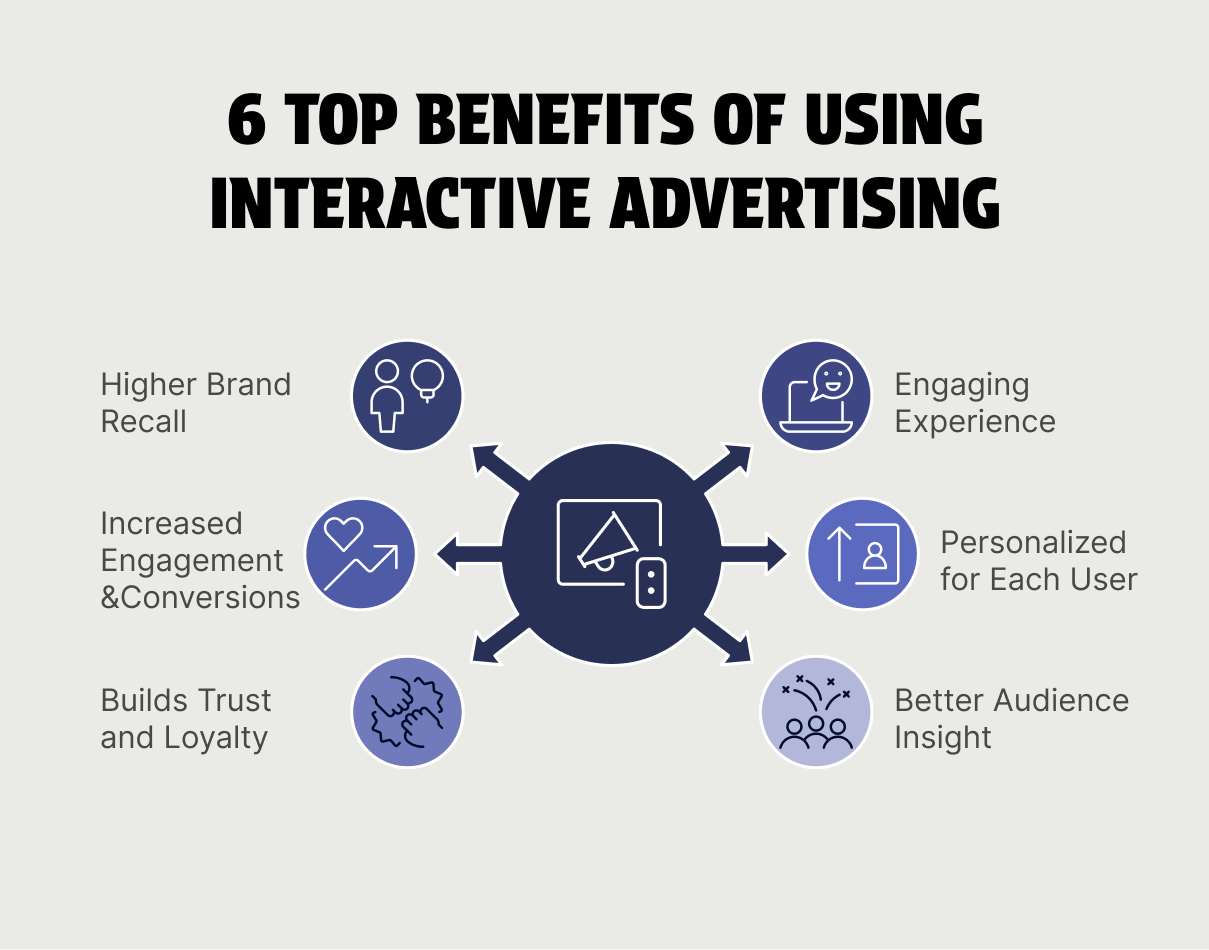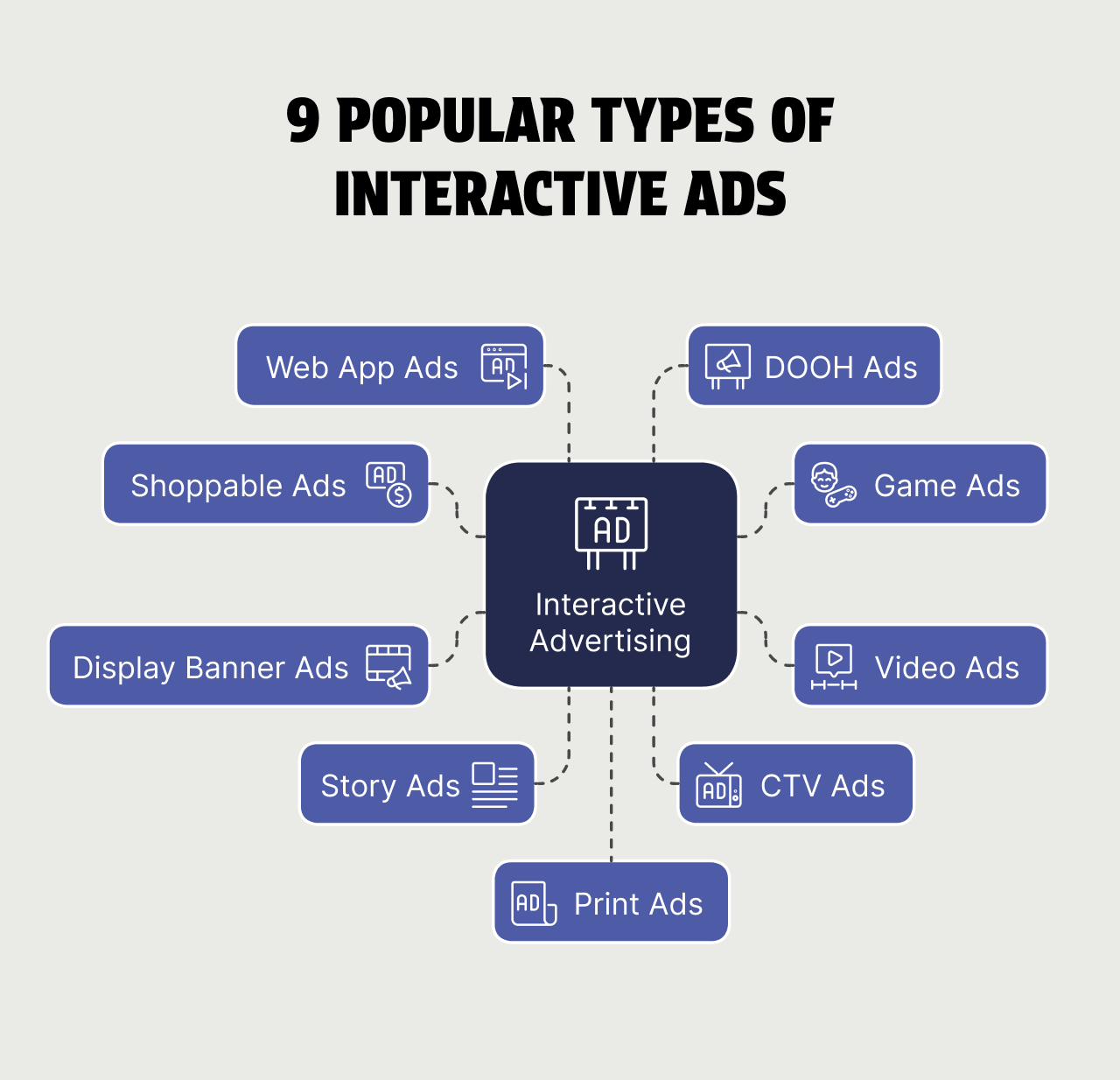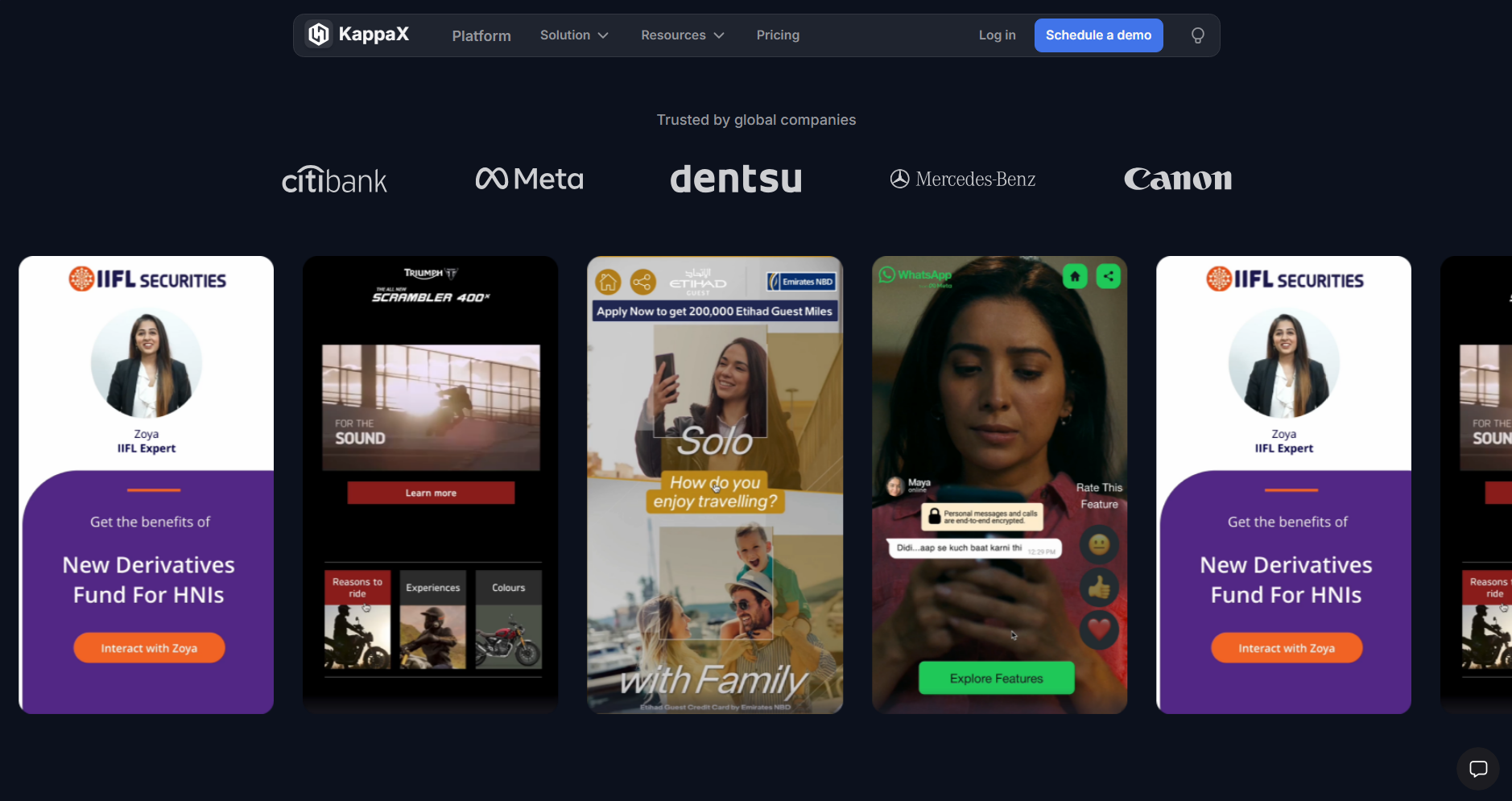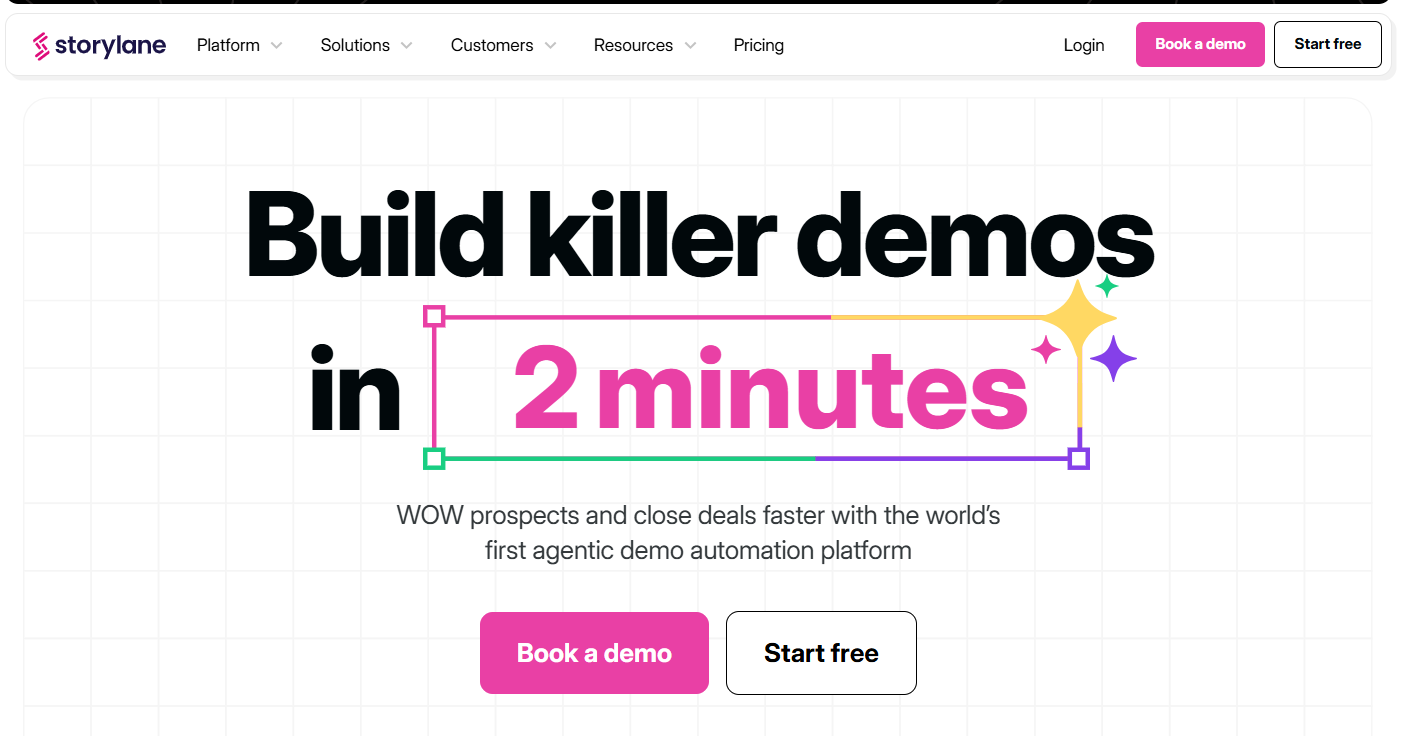You must have skipped 1000s of ads without even thinking twice, right? Most People do. That's the reason why traditional ads aren't as effective anymore. But Interactive ads are different - they let people to engage with ad through quizzes, polls or sliders.
Interactive advertising encourage customers to actively participate. This type of advertising promotes two-way communication, that eventually enables users to interact with the ad in real-time.
What Exactly Is Interactive Advertising?
Interactive advertising is a kind of digital advertising that allows people to click, swipe, play or somehow engage with the ad instead of just watching or reading it.
These ads are designed to catch people's attention, grow engagement exponentially, which eventually leads to higher conversion rate. They make the overall experience memorable.
Try Interactive with this live Interactive Experience made using KappaX
Think of it this way: unlike regular Static Ads, interactive ads let people to participate by including the following interactive elements -
- Quizzes
- Polls
- Sliders
- Clickable Hotspots
- Swipable Carousals etc.
Also Check: How to improve Conversion Rates
Why Brands Use Interactive Advertising
As we all know, Brands always experiment with new campaign ideas to stand out, gain huge popularity, and boost sales.
Interactive ads are one such experiment that many companies use to market themselves in a memorable way. These ads aim to engage with customers and leave a long-lasting impression.
Insight #1: The market for interactive advertising has expanded significantly in the last several years - expected to get a huge jump from $35.65 billion in 2024 to $38.75 billion in 2025 at a growth rate of 8.7% annually. (Source)
6 Big Advantages of Using Interactive Ads

1# Interactive Ads Improve Brand Recall
As interactive ads inspire customers to act, the action forms a strong impression that results in higher brand recall among the customers. When compared to traditional ads, research indicates that interactive ad formats increase brand recall by more than 50%.
2# Creates a Personalized Experience
According to HubSpot’s report, 47% of marketers find interactive videos among the top three methods for increasing engagement. The most commonly used interactive elements in an ad are -
- Polls
- Quizzes
- Games
- Interactive Videos.
Unlike static ads, interactive ads offer an enhanced engaging experience of the product/service. They provide more clarity and information that users look for.
3# Higher Engagement & Conversions
By encouraging customers to act, interactive ads increase the chances that they will interact with the ad by sharing or clicking CTAs. Interactive ads, as opposed to passive ones, demand user involvement, which raises the possibility of users more likely to convert.
4# Ads Tailored to Each User
According to the survey published by IAB, nearly 80% of people are more likely to engage with ads that are tailored to their interests.
Interactive ads can be customized to match the interests or actions of individual users. By using data Insights, Advertisers may create personalized experiences that are more appealing to specific users.
5# Builds Trust and Loyalty
Consumers trust those brands more when they feel acknowledged or participate in some way. Additionally, the customer retention rate is directly correlated with increased engagement and conversion rates. Using interactive ads in the advertising strategy promotes two-way communication with the targeted customers.
6# Deeper Audience Insights
Users' interactions provide valuable information about their choices, interests, and behavior. Interactive ads may additionally identify crucial information about the needs and pain points as well. Advertisers could enhance the performance of their ads by keeping an eye on all of this data insights in their analytics.
Different Types of Interactive Ads You Can Try

There are numerous types of interactive ads, each with a different method of interacting with users. These ads seek to establish a closer connection with the customer.
Interactive ads enhance user experience, increase engagement, and result in increased conversion rates. Brands can select the format that best suits their marketing strategy.
Also Check: How to increase Ad Engagement
1# Interactive Shoppable Ads
These are ads that let people purchase products directly from the ad, usually by clicking on CTA buttons. Shoppable ads make it easier for customers to buy right away after seeing a product they want by streamlining the purchasing procedure.
These ads are highly effective such that Conversion rates are increased by 30%
Used On:
- Microsites
2# Interactive Games
Ads that use challenges or game-like aspects are Interactive Game Ads. In these types of interactive ads, a short, interactive game or app demo lets users try out a game for a few minutes before choosing to download or purchase it. A very good way to build engagement directly with the users.
Used On:
- Mobile apps
- Websites
3# Interactive Videos
Interactive video ads let viewers engage with the content in a way that user can select products featured in the video or decide which plot line to follow and make decisions after having a full-fledged product experience.
Interactive video ads drive 13x more interaction and 50x more CTA clicks.
Used On:
- YouTube
- Website
- Mobile App
- Social Media
4# Interactive Display Banners
Digital ads that enable users to interact with the information are known as interactive display ads. These banner ads provide a more dynamic experience than static banners with interactive features, including integrated mini-games, animations, clickable call-to-action buttons, and mouse-over effects.
Used On:
- Websites
- Mobile Apps
- Social Media
5# Interactive Stories
Interactive story ads allow viewers to choose options directly from the stories. Users can respond to questions, vote in polls, and participate by swiping up on Instagram or Facebook Stories.
Used on:
- Snapchat
- AR & VR-enabled apps
6# Interactive CTVs
Interactive CTV (interactive connected television) advertising provides viewers with a more engaging viewing experience than traditional television.
Picture-in-Picture (PiP) advertisements, interactive overlays, and carousel commercials are just a few examples of interactive CTV.
Used On:
- Apple TV
- Amazon Fire TV
- Roku
7# Interactive Web Apps
Advertisements that employ chatbots and AI that answer queries, help with purchases, or walk customers through product alternatives on a website. These interactive ads engage with customers in conversation with the brand, usually to get additional information or complete a purchase.
Used On:
- Websites
- Mobile Apps
What are the Best Platforms to Create Interactive Ads?
Here are 3 great tools to help you make awesome interactive ads:
1# KappaX
This tool is made just for interactive ads. You can easily create videos people can click on, add hot spots on products, make forms, or even quizzes. It's all drag-and-drop, so you don't need to know any complicated computer code.

2# AdCreative.ai
This one uses AI (like a smart computer brain) to automatically make great ad designs. It can even guess which ad designs will work best to get people to click and buy.

3# Playbuzz (now called EX.CO)
This platform helps you create interactive content like polls, quizzes, and stories. These can then be used as really engaging ad formats.
4 Best Live Interactive Ad Examples
1# Interactive Product Demo for Vivo X50 Series (Built using KappaX)
The ad contains Vivo X50 series features with a BUY NOW CTA to go directly to the product page. This ad is intended to increase conversions by eliminating unnecessary steps.
Find the full case study here - vivo case study
2# Interactive Ad for Covermitra (Built using KappaX)
This is a conversational ad using a human chatbot that gives a tour of the services.
Find the complete case study here - Covermitra case study
Check these 8 Brilliant Interactive Ad Examples (with Live Preview)
3# Interactive Product Demo for Mercedes-Benz (Built using KappaX)
Users can get plenty of information about the selected Mercedes car's style, technology, performance, color, and comfort from the video ad. Additionally, it features a call-to-action button that takes users straight to the website to obtain additional details.
find the full case study here - Mercedes-Benz Case Study
4# Interactive Ad for Bajaj Finserv (Built using KappaX)
The ad is integrated with a calculator to calculate SIPs, tenure, and interest rates easily in the ad itself. It is a form of gamified ads that can appeal to customers for interaction.
find the full case study here - Bajaj Finserv Case Study
How KappaX let you create Interactive Ads in Minutes
With KappaX’s no-code editor, you can build an end-to-end interactive ad that can make customers aware and engage them more experientially.
The ads are created in various formats that engage the audience with the help of storytelling. The idea behind the ad is to cater to the users' queries and serve them with what they need. The ads are personalized in real-time as per the choices. Try out creating engaging ads that convert free with KappaX.
Future of Interactive Advertising
As time has changed, so have people's attention spans. Brands ought to level up their advertising game to get customers' attention for a few minutes while they are busy. Adding interactivity to the ad works like a communication bridge between the brand and the customers.
Here is what future of interactive advertising looks like -
Smarter, Personalized Ads
The ads will be highly tailored utilizing AI technology. It will be specially customized to fit the tastes, characteristics, and actions of every user. To keep the ads relevant, the ad copy will also be updated in real-time.
The culmination of AR/VR technology
AR and VR are already transforming the advertising landscape. It is going to rule extensively in the next decade with its immersive ad experience feature. Ads are going to be felt and experienced rather than just seen.
AI Chatbots Integration
AI-powered chatbots are going to transform the interactive ads future. Brands will produce conversational and highly customized advertising experiences using virtual assistance. These assistants can help with queries related to the product and services in real time.
Short-form Video Ads
Interactive video ads are on the rise; creating engaging experiences using the click, swipe, and tap options can boost the engagement rate up to 5x. Brands will be incorporating shoppable, gamified ads in the form of short video ads to maximize the ROI.
Data Privacy & Security
The ongoing technology proliferation in advertising works as a double-edged sword. It’s pivotal to keep data privacy and security of paramount importance. Brands will have to follow GDPR and CCPA guidelines to secure users' personal information and privacy.
Final Thoughts
The basic definition of interactive ads is ads that encourage some form of engagement with the ad. These ads demand a response from the viewer in terms of clicking, sharing, commenting, playing games, or engaging in any activity other than viewing the ad.
The future of interactive advertising will integrate AI, AR/VR, and other technologies with an emphasis on ethics and the customer experience.
